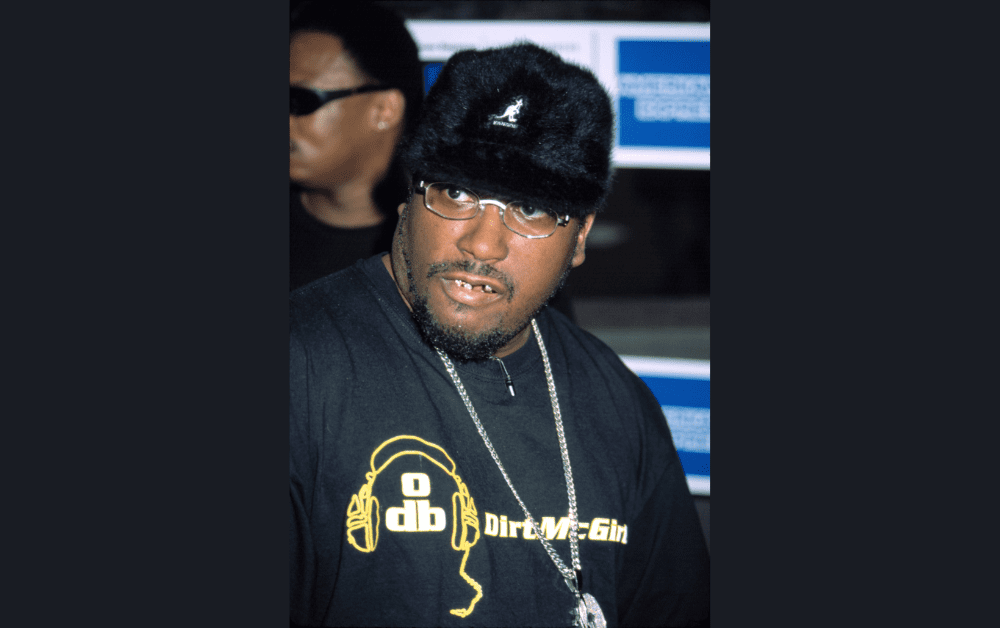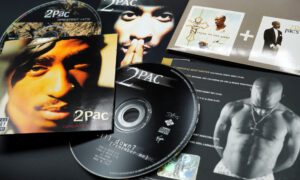
Return to the 36 Chambers: Ol’ Dirty Bastard’s Unparalleled Debut
On this Day in Hip-Hop History (March 28): Breaking the Mold in Hip-Hop’s Chamber
Why does Ol’ Dirty Bastard’s debut album carve such a distinct mark in hip-hop? Return to the 36 Chambers: The Dirty Version isn’t just an album; it’s a grimy odyssey through the brains of one of Wu-tang Clan’s unique members. It disrupts the conventional with its left-field production and ODB’s unique vocal delivery. Venturing through this album is to navigate the peaks and valleys of Ol’ Dirty Bastard, who defied any attempt at categorization.
From the Shaolin Shadows: The Birth of a Classic
The genesis of this album is as idiosyncratic as ODB himself. Crafted during an era when the Wu-Tang Clan was redefining hip-hop’s boundaries, ODB infused the recording process with unmatched spontaneity and vigor. His method was anything but conventional, marrying raw lyrical narratives with an assorted backdrop of beats. This fusion birthed a sound that was unmistakably his own, never to be replicated in hip-hop history.
ODB’s Voice: The Raw Shaolin Sword
Return to the 36 Chambers mesmerizes primarily through ODB’s voice—a raw, unpolished force that conveys profound emotion with every rasp and howl. The production, helmed by RZA, mirrors this intensity, crafting a soundscape that’s both groundbreaking and timeless. RZA’s ingenius use of the ASR-10 sampler and SP-1200 only added to the gravelly nature.
Related: Explore Wu-Tang’s hit song “C.R.E.A.M.”
Like most solo Wu-Tang solo albums, Return to the 36 Chambers many memorable verses from his fellow Wu-Tang Clan members.
The Most Representative Songs of “Return to the 36 Chambers”
Ol’ Dirty Bastard’s debut, “Return to the 36 Chambers: The Dirty Version,” is a treasure trove of hip-hop eccentricity and raw emotional power. Among its tracks, a few stand out not just for their immediate impact but also for their lasting influence on the genre. Here, we delve into the most representative songs of the album, highlighting key lyrics and exploring the genius behind their production, including the artful integration of samples.
“Shimmy Shimmy Ya”
- Key Lyrics: “Ooh baby I like it raw, yeah baby I like it raw!”
- Production and Samples: Produced by RZA, this track is a quintessential example of the Wu-Tang Clan’s gritty, raw sound. The song’s infectious piano loop captures the listener’s attention from the first note, setting the stage for ODB’s unfiltered delivery. The track features a collage of samples, including drums from The Emotions and a vocal sample of Richard Pryor.
“Brooklyn Zoo”
- Key Lyrics: “Shame on you, when you step through to the Ol’ Dirty Bastard, Brooklyn Zoo!”
- Production and Samples: True to its name, “Brooklyn Zoo” is an homage to ODB’s roots, with production handled by Ol’ Dirty Bastard himself, along with True Master.
“Hippa to da Hoppa”
- Key Lyrics: “Hippa to the hoppa and you just don’t stoppa”
- Production and Samples: This track stands out for its minimalist beat and raw lyricism, a showcase for ODB’s unorthodox flow and vocal style. The production, by RZA, leans heavily on the samples including, organs from Booker T. & the MG’s, drums from Skull Snaps,
These tracks epitomize the essence of “Return to the 36 Chambers: The Dirty Version.” Through a blend of ingenious sample usage, raw lyrical delivery, and production that walks the line between rough and genius, ODB created an album that stands the test of time. Each song is a window into his soul, offering a glimpse of the genius that was Ol’ Dirty Bastard. The album’s legacy is not just in the sounds it captured but in the emotions it evokes, a raw portrayal of one of hip-hop’s most unforgettable characters.
Order the classic album on vinyl:
Related: Find out which Wu-Tang albums made the list of the best hip-hop albums of all-time.
The Enduring Spirit of ODB
Ol’ Dirty Bastard’s legacy is a tapestry woven with threads of brilliance and tumult. Despite life’s rollercoaster, his influence on music has remained indelibly impactful. Return to the 36 Chambers stands as a cornerstone in ’90s hip-hop, pivotal in sculpting the genre’s future direction.
Among the Wu-Tang Scrolls: A Unique Saga
Within the Wu-Tang Clan’s saga, Return to the 36 Chambers: The Dirty Version holds a singular place. Emerging in the wake of the Clan’s debut masterpiece, Enter the Wu-Tang (36 Chambers), it was among the first solo voyages following the collective’s breakthrough. Positioned alongside albums like Raekwon’s Only Built 4 Cuban Linx…, GZA’s Liquid Swords, and Method Man’s Tical, ODB’s work shines for its unbridled expression and vitality.
Contrasting with the meticulous narratives of Liquid Swords or the streetwise tales of Only Built 4 Cuban Linx…, ODB’s album is an explosive showcase of personality. It feels like a direct channel into ODB’s spirit—raw and untempered.
Set against later chapters such as Ghostface Killah’s Supreme Clientele or the ensemble’s Wu-Tang Forever, Return to the 36 Chambers does more than just contribute to Wu-Tang’s legacy—it elevates it. The album’s success and enduring relevance highlight the Clan’s collective prowess and the distinctive skills of its members. ODB’s debut serves as a vibrant reminder of the Wu-Tang Clan’s eclectic genius, with each member enriching the collective’s dynamic essence.
The Album’s Legacy: A Raw Portrayal of an Unforgettable Character
Return to the 36 Chambers: The Dirty Version stands as a cornerstone of ’90s hip-hop, a pivotal work that continues to shape the genre’s evolution. Its tracks, characterized by ingenious sample usage, raw lyrical delivery, and groundbreaking production, offer a window into ODB’s soul, showcasing the genius of an artist whose influence resonates in the heart of hip-hop.











